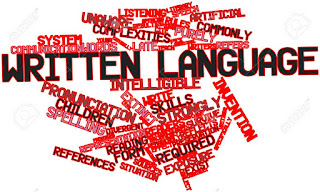4. Approaches to reading in a foreign/second language
4.1. Bottom-up process: based upon the assumption that the reader
starts from decoding the most specific levels of the language before grasping
the most general ones.
- The reader first recognises individual letters, form words, these in turn make up phrases, then clauses, sentences, texts…
- Later on, he/she makes use of his/her linguistic mechanisms to make some sort of sense of the data.
- Numerous activities to develop the learner’s bottom-up strategies and subsequently allow him/her to process the text in this way.
- Identify words by letter combination.
- Difficult sound clusters.
- Re-ordering scrambled words and matching.
- Discriminating minimal pair sounds.
- Reading and stress.
4.2. Top-down process
- The process starts from the higher levels of processing and proceeds to use the lower levels selectively.
- Background knowledge plays a key role since the reader combines what he/she already knows with the new information from the text to achieve a personal interpretation.
- Activities:
- Deducting from context: can you deduce from context the
meaning of resort, hike and sunbathers? Are these words essential for the
comprehension of the passage? Why?
- Relating written text to general world knowledge. Relate
his/her world knowledge r background to the written information from the text.
4.3. Interactive process:
- Eclectic approach: the reader depending on his/her purposes, the type of text, etc. activities different strategies which shift from bottom-up to top-down and viceversa. This has come to be known as interactive reading.














